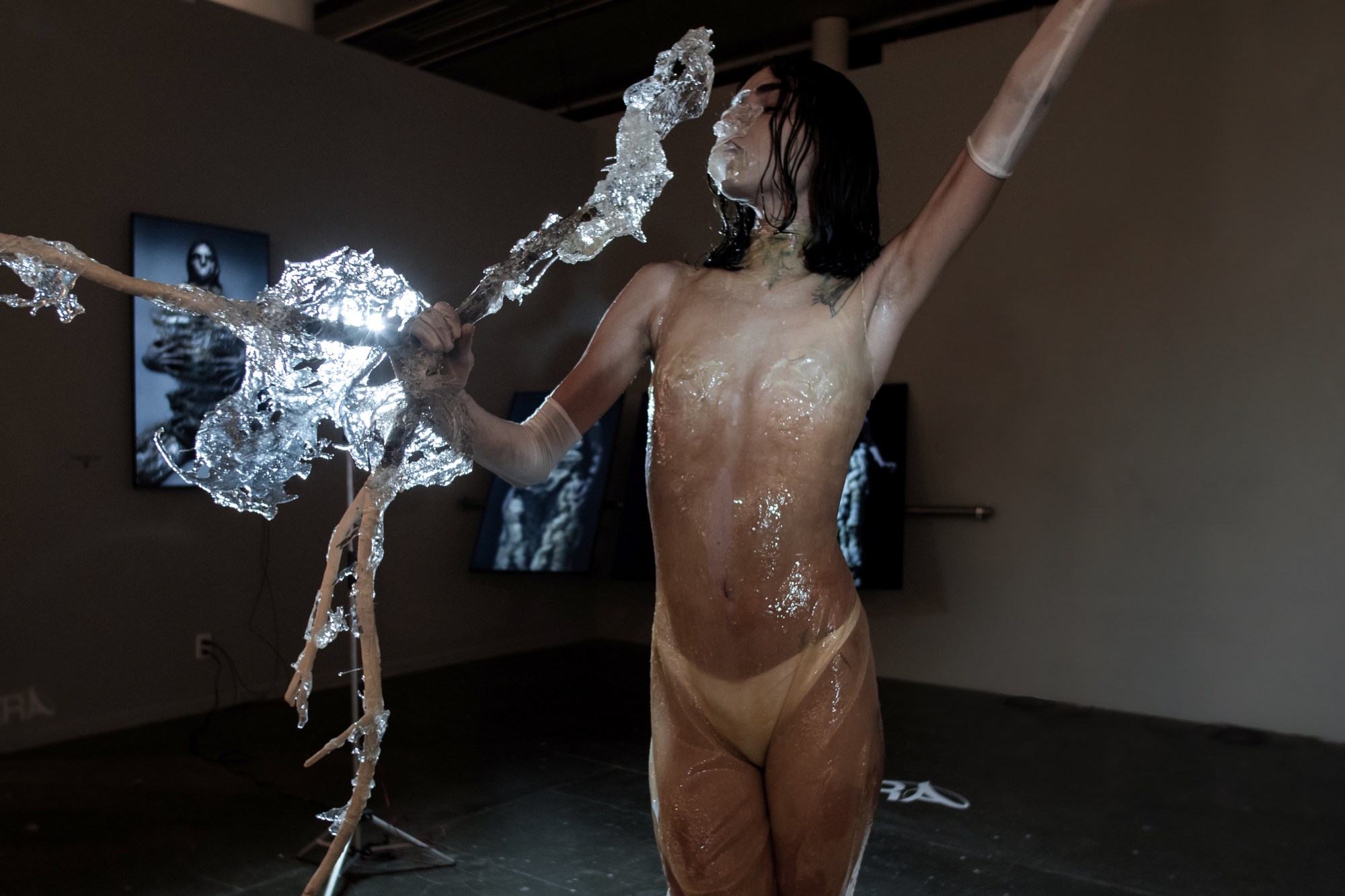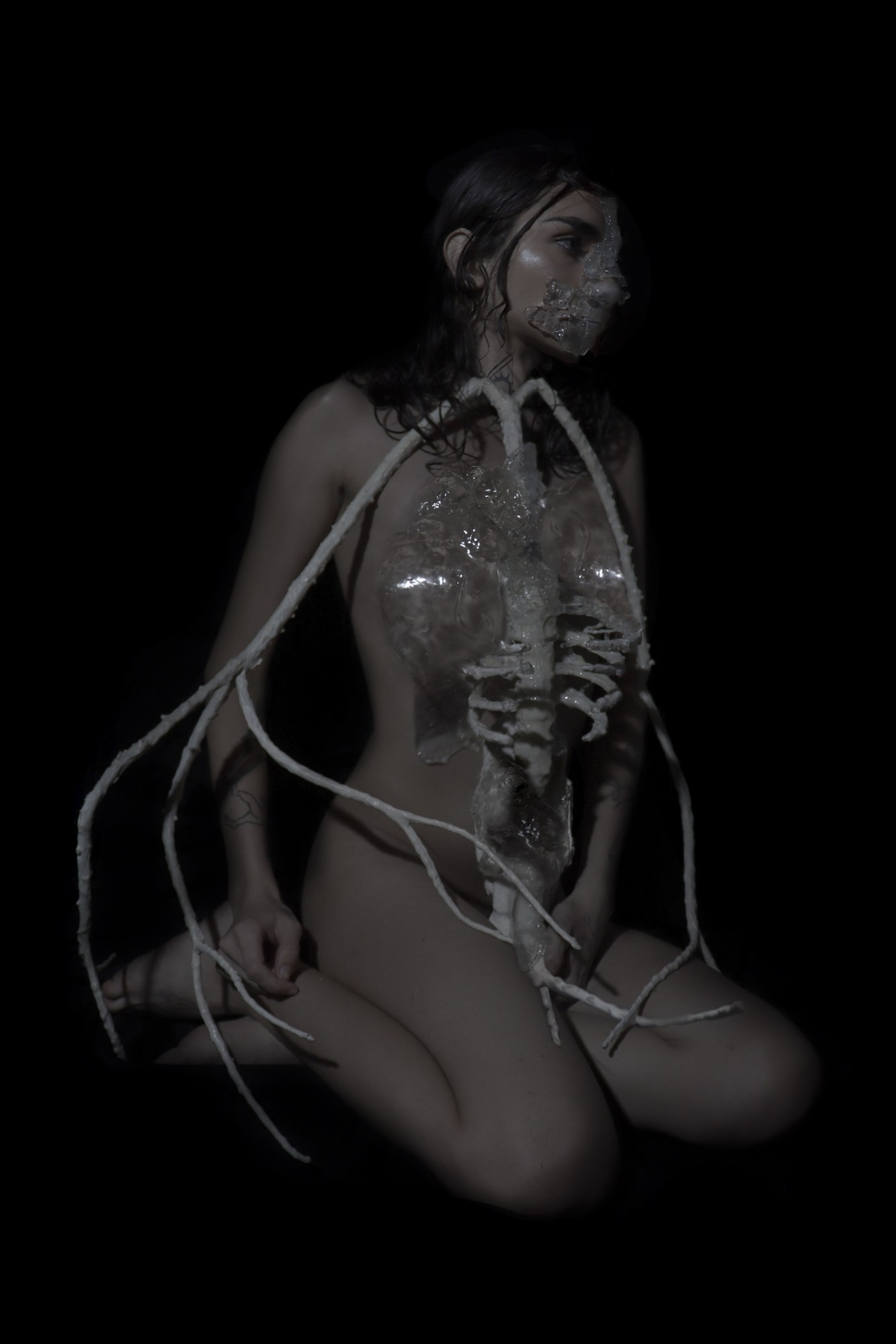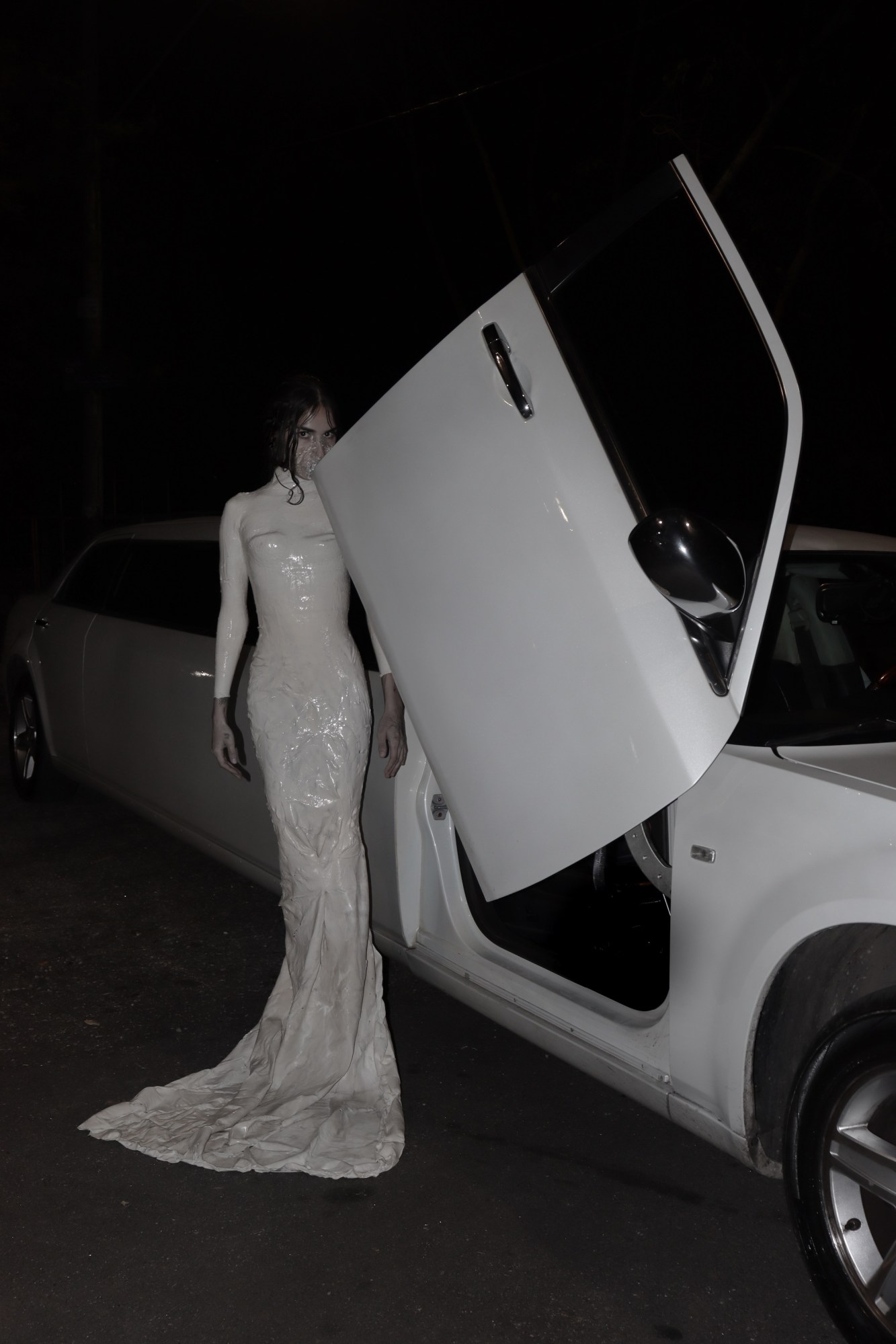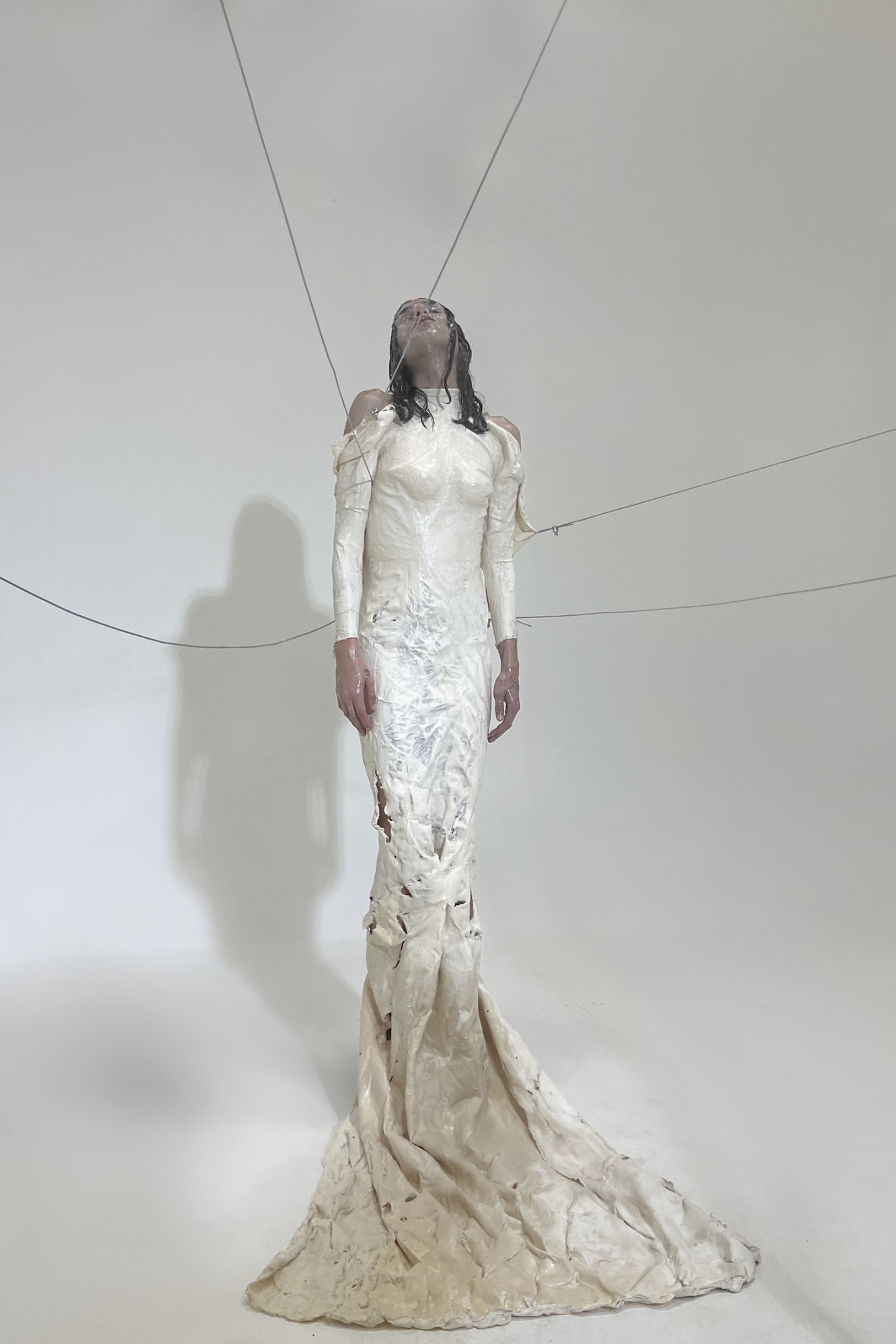Aun Helden has devoted her artistic practice to survival. She describes herself as an “image-maker”, using biology, distortion and metamorphosis in order to define the self and narrate her own transformational pathway. Unconventional materials and alternative definitions of beauty are explored throughout her work, which spans mediums. “It could be photography or performance, audio or visuals. My method remains the same, to experiment with symbolism and dissect image structures using my body and semiotics,” she says.
Our conversation takes place over Google Meets, one of us in Paris, the other in São Paolo. Aun shares her first insight into the Brazilian underground art scene, an impactful encounter which helped ignite her artistic vision. Roughly five years ago she enrolled in theatre classes in a neighboring city, but it wasn’t for her. “I wanted to skip every class and create my own art instead,” she recalls. “I was yearning for something else, it was more an act of rebellion than anything else. I didn’t want to be forced into old structures or modes of expression.”

Aun’s “rebels in times of toughness”-inspired practice, is an intersection of experimentation and liberation. It resembles a mindfully crafted melting pot, symbolizing not only her life as an artist, but as a trans person in Brazil. In order to express herself freely, she had to construct her own language: “As I got introduced to the underground movement, I realized that I too need to break free from ancient, preconceived structures. It sparked a sense of freedom in me, encouraging me to find my own voice.”
Aun’s non-conformist art practice, featuring distorted shapes and unorthodox textures, is “constantly labeled as crazy.” But crazy has never been her intention. “Just because my work, and myself, is rooted in fantasy and fiction rather than conformist and mainstream, it’s instantly perceived as crazy. I’m not crazy, nor is my art. I’m very grounded and very conscious with my creation; I always create with a conscious vision of what I’d like to achieve.” Her most recent work Eternidade, which means eternity in Portuguese, contemplates the clash between fiction and reality she feels. In the performance, Aun plays “a ghost — a feminine ghost — with my synthetics, my lichen, my fantasy carcass,” exploring the process of metamorphosis, attempting to find a way to partake in this world in a transitioning body. To complement the performance, she also released Fantasma Feminino (2022) with C.C. Books and a film.

Materials that are near-obscene to the public eye, such as distressed prosthetics, fossilized glass and distorted organic tissue, strengthen Aun’s narrative. She goes on to recall her introduction to prosthetics as an 18-year-old, a paradox of feeling a very familiar sensation of strangeness although she’d never seen the material before. They remain key to her practice, as they help to narrate her own process of deconstruction and reconstruction. “I’ve always felt trapped in my own body. I’ve experienced many strange frequencies, and prosthetics sparked the same sensation of strangeness,” she explains. “It’s like fantasy flesh. Nothing is definite, you can change everything. It made me realize that I can change my body too.”
Continuously using your body as a canvas is equal parts exhausting and nurturing. Aun calls it a “glitch of perception”. “It’s not just a glitch that I experience, I’m sure it’s present among all trans people,” she says. “For me, it’s connected with the notion of dying and being reborn. Through my art, I’ve found the tools, the energy and the strength needed to change my body in the ways that I want. At the same time, our society doesn’t back me up in this. The world is still stuck in old structures of perceiving bodies and identities, and that’s where we’re glitching.”
Aun’s work is quite unique in the sense that spectators are invited into the intimate process of reinventing an identity, a process that is still ongoing. “If you look at my work, old as new, you’ll see exactly what was happening with my body at that specific time,” she says. “I could never separate my artistic pathway from my personal one, everything I do is correlated to my perception of my own identity.”
Throughout Aun’s work, there’s an overarching focus on self-perception, and she wants to challenge the mainstream framework of beauty. “I think that beauty, and the word beautiful, is connected to a comfort zone within us,” Aun says. “We’re programmed to immediately perceive something as ugly as soon as it doesn’t match these normative beauty standards. I’d like to think that whenever someone finds my work ugly, it’s triggering something in them. It’s a sign to me that I’ve successfully offered another form of beauty and reality.”
When you operate as a somewhat radical, progressive artist in Brazil, the stakes are high due to the overwhelmingly conservative government. If you then also identify as trans, queer or anything which rails against the far-right groundwork, the stakes are even higher. “Every day, trans people like myself get killed on the streets. It goes way beyond insulting and censorship, there’s a constant narrative of violence which will never stop surrounding us,” she says. In Brazil, and Latin America as a whole, there’s a strong emergence of non-conformist artists such as Dan Lie and Grupo Mexa, using art as a coping mechanism, striving for equality and liberation. “None of us can express ourselves freely as humans. So, creating art is our only way to cope. Art helped me to identify the right tools to continue breathing and existing in this censored, normative, transphobic and racist country that I get to call my home.”
Finding security is Aun’s ultimate dream, perhaps in a free-spirited, not-yet-defined place she wishes to reach through her artistic practice. If she could dream freely, she names Europe as one possible literal destination, but security is anywhere where comfort is attainable for trans folks. “I want to exist somewhere where I can produce art in a healthy way, stripped of the fragility I feel every day. Right now, I’m in a constant state of emergency. I dream of security, to finally put this body that I’m creating in a welcoming place.”



Credits
All photos courtesy of the artist.

